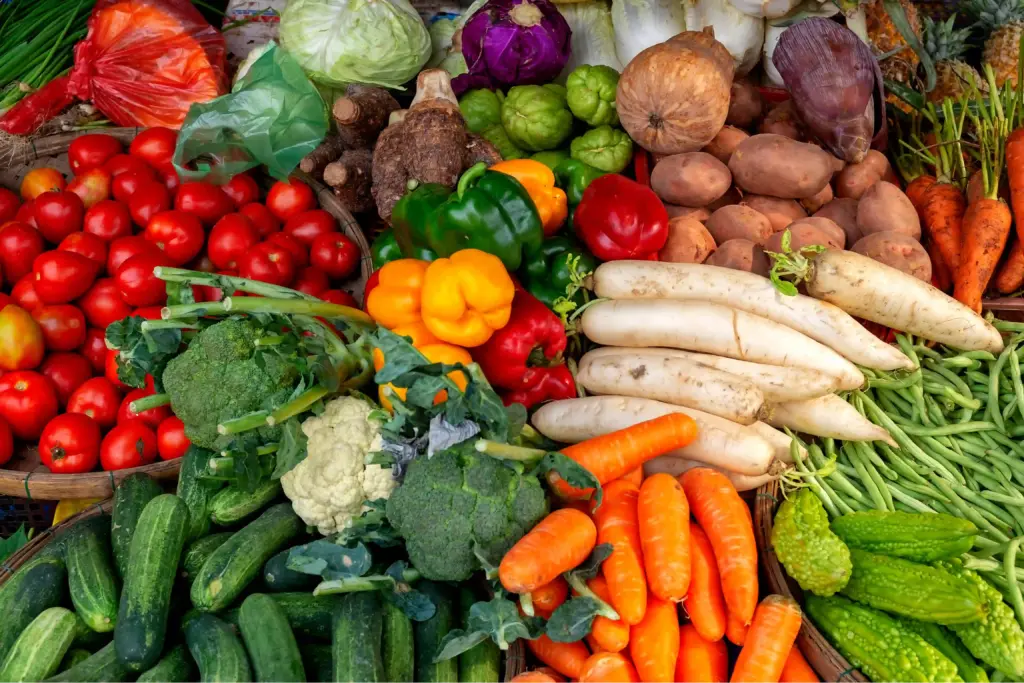When learning Spanish, expanding your vocabulary to include everyday items like vegetables is essential. However, it’s important to note that the names of some vegetables can vary from one Spanish-speaking country to another. This blog post will introduce you to the names of different vegetables in Spanish, highlighting regional variations and providing examples to help you understand and remember them.
Common Vegetable Names in Spanish
Here are some common vegetables and their Spanish names:
- Carrot
- Zanahoria (general)
- Potato
- Papa (general)
- Patata (Spain)
- Tomato
- Tomate (general)
- Jitomate (Mexico)
- Onion
- Cebolla (general)
- Lettuce
- Lechuga (general)
- Garlic
- Ajo (general)
- Bell Pepper
- Pimiento (Spain)
- Pimentón (Latin America)
- Ají (some parts of Latin America)
- Corn
- Maíz (general)
- Elote (Mexico)
- Choclo (South America)
- Green Beans
- Judías verdes (Spain)
- Ejotes (Mexico)
- Habichuelas (Caribbean)
- Pumpkin
- Calabaza (general)
- Zapallo (South America)
Regional Variations and Examples
Understanding regional variations can help you navigate different Spanish-speaking countries more effectively. Here are some examples:
- Potato
- In Spain, you would ask for “patatas”.
- Example: “Quiero comprar un kilo de patatas.”
- (I want to buy a kilo of potatoes.)
- In Latin America, you would ask for “papas”.
- Example: “Voy a cocinar papas fritas.”
- (I am going to cook French fries.)
- In Spain, you would ask for “patatas”.
- Bell Pepper
- In Spain, “pimiento” is commonly used.
- Example: “Necesito un pimiento rojo para la ensalada.”
- (I need a red bell pepper for the salad.)
- In Latin America, “pimentón” or “ají” might be used.
- Example: “Voy a añadir pimentón al guiso.”
- (I am going to add bell pepper to the stew.)
- In Spain, “pimiento” is commonly used.
- Corn
- In Mexico, “elote” is widely used.
- Example: “El elote asado es delicioso.”
- (Grilled corn is delicious.)
- In South America, “choclo” is the term you’ll hear.
- Example: “Me gusta el choclo en la sopa.”
- (I like corn in the soup.)
- In Mexico, “elote” is widely used.
- Green Beans
- In Spain, you would use “judías verdes”.
- Example: “Las judías verdes son saludables.”
- (Green beans are healthy.)
- In Mexico, you would say “ejotes”.
- Example: “Voy a comprar ejotes frescos.”
- (I am going to buy fresh green beans.)
- In Spain, you would use “judías verdes”.
Practice Sentences
Here are some sentences to help you practice using these vegetable names in context:
- I want to buy a kilo of carrots.
- Quiero comprar un kilo de zanahorias.
- Do you have potatoes?
- ¿Tienes patatas? (Spain)
- ¿Tienes papas? (Latin America)
- Tomatoes are on sale.
- Los tomates están en oferta.
- We need garlic for the recipe.
- Necesitamos ajo para la receta.
- The lettuce is fresh.
- La lechuga está fresca.




